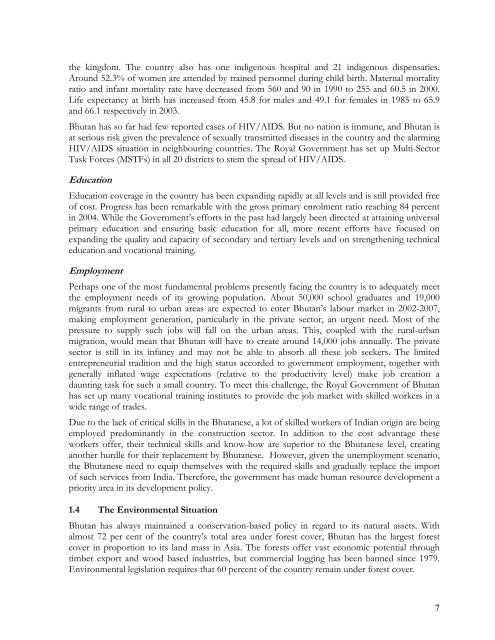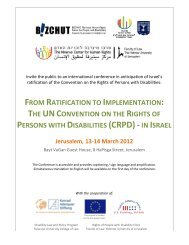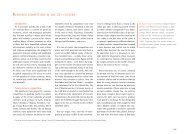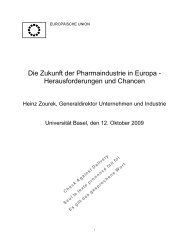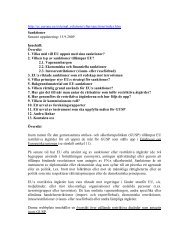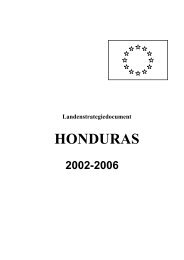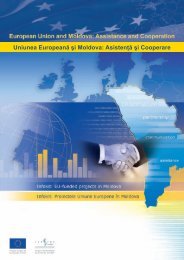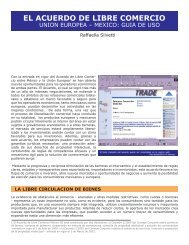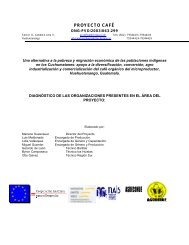Bhutan Country Strategy Paper 2007-2013 - the European External ...
Bhutan Country Strategy Paper 2007-2013 - the European External ...
Bhutan Country Strategy Paper 2007-2013 - the European External ...
Create successful ePaper yourself
Turn your PDF publications into a flip-book with our unique Google optimized e-Paper software.
<strong>the</strong> kingdom. The country also has one indigenous hospital and 21 indigenous dispensaries.<br />
Around 52.3% of women are attended by trained personnel during child birth. Maternal mortality<br />
ratio and infant mortality rate have decreased from 560 and 90 in 1990 to 255 and 60.5 in 2000.<br />
Life expectancy at birth has increased from 45.8 for males and 49.1 for females in 1985 to 65.9<br />
and 66.1 respectively in 2003.<br />
<strong>Bhutan</strong> has so far had few reported cases of HIV/AIDS. But no nation is immune, and <strong>Bhutan</strong> is<br />
at serious risk given <strong>the</strong> prevalence of sexually transmitted diseases in <strong>the</strong> country and <strong>the</strong> alarming<br />
HIV/AIDS situation in neighbouring countries. The Royal Government has set up Multi-Sector<br />
Task Forces (MSTFs) in all 20 districts to stem <strong>the</strong> spread of HIV/AIDS.<br />
Education<br />
Education coverage in <strong>the</strong> country has been expanding rapidly at all levels and is still provided free<br />
of cost. Progress has been remarkable with <strong>the</strong> gross primary enrolment ratio reaching 84 percent<br />
in 2004. While <strong>the</strong> Government’s efforts in <strong>the</strong> past had largely been directed at attaining universal<br />
primary education and ensuring basic education for all, more recent efforts have focused on<br />
expanding <strong>the</strong> quality and capacity of secondary and tertiary levels and on streng<strong>the</strong>ning technical<br />
education and vocational training.<br />
Employment<br />
Perhaps one of <strong>the</strong> most fundamental problems presently facing <strong>the</strong> country is to adequately meet<br />
<strong>the</strong> employment needs of its growing population. About 50,000 school graduates and 19,000<br />
migrants from rural to urban areas are expected to enter <strong>Bhutan</strong>’s labour market in 2002-<strong>2007</strong>,<br />
making employment generation, particularly in <strong>the</strong> private sector, an urgent need. Most of <strong>the</strong><br />
pressure to supply such jobs will fall on <strong>the</strong> urban areas. This, coupled with <strong>the</strong> rural-urban<br />
migration, would mean that <strong>Bhutan</strong> will have to create around 14,000 jobs annually. The private<br />
sector is still in its infancy and may not be able to absorb all <strong>the</strong>se job seekers. The limited<br />
entrepreneurial tradition and <strong>the</strong> high status accorded to government employment, toge<strong>the</strong>r with<br />
generally inflated wage expectations (relative to <strong>the</strong> productivity level) make job creation a<br />
daunting task for such a small country. To meet this challenge, <strong>the</strong> Royal Government of <strong>Bhutan</strong><br />
has set up many vocational training institutes to provide <strong>the</strong> job market with skilled workers in a<br />
wide range of trades.<br />
Due to <strong>the</strong> lack of critical skills in <strong>the</strong> <strong>Bhutan</strong>ese, a lot of skilled workers of Indian origin are being<br />
employed predominantly in <strong>the</strong> construction sector. In addition to <strong>the</strong> cost advantage <strong>the</strong>se<br />
workers offer, <strong>the</strong>ir technical skills and know-how are superior to <strong>the</strong> <strong>Bhutan</strong>ese level, creating<br />
ano<strong>the</strong>r hurdle for <strong>the</strong>ir replacement by <strong>Bhutan</strong>ese. However, given <strong>the</strong> unemployment scenario,<br />
<strong>the</strong> <strong>Bhutan</strong>ese need to equip <strong>the</strong>mselves with <strong>the</strong> required skills and gradually replace <strong>the</strong> import<br />
of such services from India. Therefore, <strong>the</strong> government has made human resource development a<br />
priority area in its development policy.<br />
1.4 The Environmental Situation<br />
<strong>Bhutan</strong> has always maintained a conservation-based policy in regard to its natural assets. With<br />
almost 72 per cent of <strong>the</strong> country’s total area under forest cover, <strong>Bhutan</strong> has <strong>the</strong> largest forest<br />
cover in proportion to its land mass in Asia. The forests offer vast economic potential through<br />
timber export and wood based industries, but commercial logging has been banned since 1979.<br />
Environmental legislation requires that 60 percent of <strong>the</strong> country remain under forest cover.<br />
7


